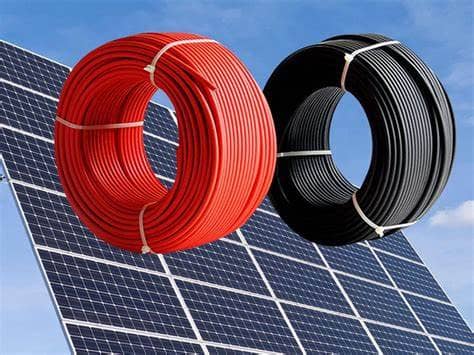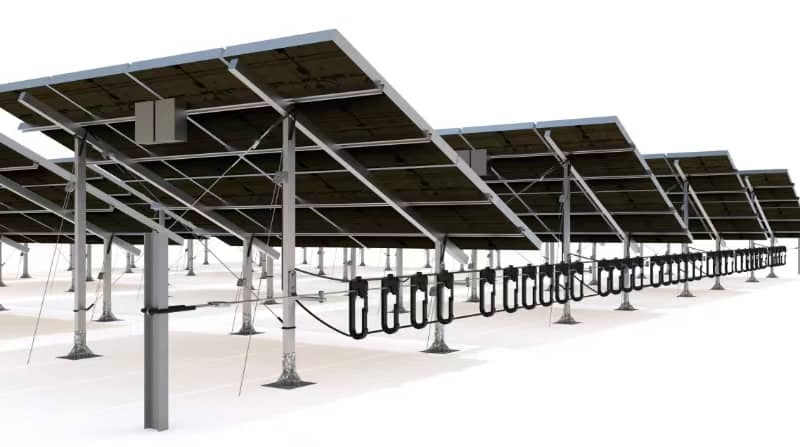How Do Climatic Conditions Affect The Selection Of Solar Cables In Global Projects?
 May 06,2025
May 06,2025

 Suke
Suke
With the continuous growth of global demand for clean energy, solar photovoltaic projects are developing rapidly around the world. As an important carrier connecting photovoltaic modules, combiner boxes, and inverters, the performance of Solar Cable directly affects the operational efficiency and safety stability of the entire system. However, the selection requirements for Solar Cable vary greatly under different climatic conditions. Ignoring these differences may lead to equipment failure, power loss, and even safety accidents.
This article will guide you to have an in-depth understanding of how to scientifically and reasonably select the appropriate Solar Cable under various typical climatic conditions.
I. Deserts and High-Temperature Regions: Heat Resistance and UV Protection Are Key
Such as the Middle East, parts of Africa, and the southwestern United States, where high temperatures and intense sunlight prevail throughout the year, and ultraviolet radiation is extremely strong.
Selection suggestions:
The insulation and sheath materials are preferably cross-linked polyethylene (XLPE) or irradiated polyolefin dedicated to photovoltaic applications, which have stronger heat resistance.
The sheath should have excellent UV resistance to prevent cracking or aging due to long-term exposure to sunlight.
The cables must comply with certifications such as UL 4703, IEC 62930, and TUV EN 50618 to ensure stable performance even at high temperatures.
II. Cold and Polar Environments: Flexibility and Low-Temperature Performance Are Key
In regions such as Russia, Canada, and Nordic countries, winters are extremely cold, with outdoor temperatures potentially dropping to -40℃.
Selection suggestions:
The cable material should have the property of resisting low-temperature cracking and remain flexible at low temperatures to facilitate construction and laying.
It is recommended to use cold-resistant TPE or low-temperature cross-linked PE materials, and add antifreeze components to the outer sheath.
The cables should have the ability to be laid at low temperatures to prevent cracking during transportation or installation.

III. Tropical and High-Humidity Areas: Moisture and Mold Prevention Are the Top Considerations
In regions such as Southeast Asia, parts of South America, and central Africa, where air humidity is high and rainfall is frequent, cables are prone to water ingress or mold growth.
Selection suggestions:
The cable should have good waterproof sealing performance, and can choose a tightly structured double-layer sheath or a structure with filling rubber strips.
Tinned copper conductors can effectively prevent oxidation and corrosion, thus prolonging the service life of cables.
The surface of the cable should be antibacterial and antifungal to prevent performance degradation in long-term damp environments.
IV. High Altitude and Strong Ultraviolet Radiation Areas: Electrical Performance and Insulation Strength Must Be Considered Simultaneously
In regions such as the Andes Mountains and the Qinghai-Tibet Plateau, high altitude implies more intense ultraviolet radiation and lower atmospheric pressure.
Selection suggestions:
Enhanced UV-resistant sheath material must be adopted and pass the xenon lamp aging test.
In a low-pressure environment, the insulation strength of cables is of vital importance. High insulation grade products should be selected to prevent electrical breakdown.
Some projects may also need to take into account flame retardancy and ozone resistance to cope with complex environments.
V. Conclusion: Tailoring to Local Conditions is the Optimal Solution
Whether your project is located in a scorching desert, a frigid mountainous area, or a humid tropical rainforest, the selection of Solar Cable should not be uniform. Choosing solar cables with the appropriate certifications and meeting local environmental requirements is the foundation for ensuring the efficient and safe operation of the system.
As a professional cable supplier, we offer a variety of Solar Cable solutions suitable for different climates, support OEM customization, and help global customers efficiently deploy green energy systems.


 Home
Home Detailed Explanation of the Differences Between FPLP and FPLR Cables | Must-read for Selecting Fire-resistant Cables
Detailed Explanation of the Differences Between FPLP and FPLR Cables | Must-read for Selecting Fire-resistant Cables  You May Also Like
You May Also Like

 Tel
Tel
 Email
Email
 Address
Address













